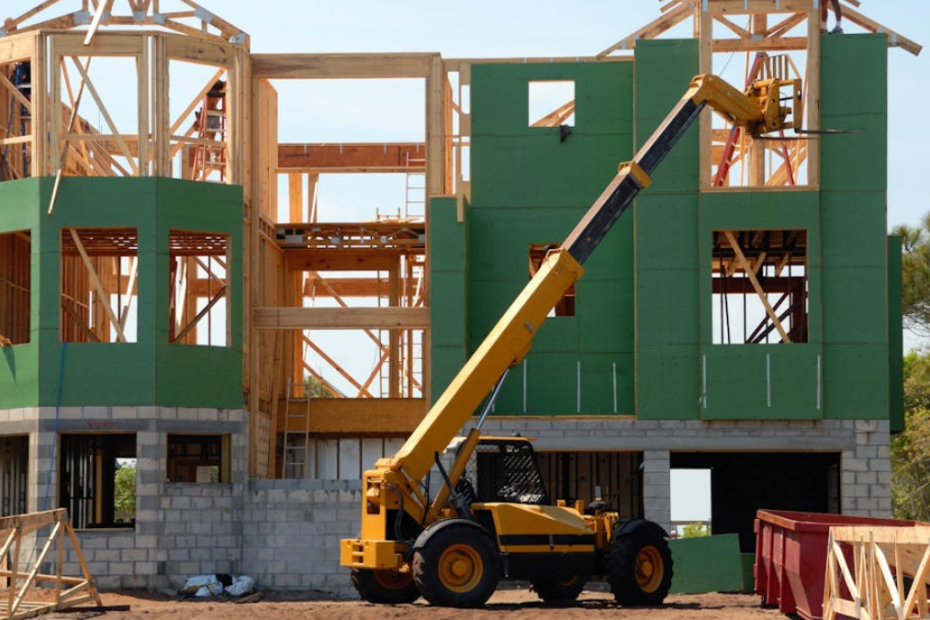Home improvement loans have become increasingly popular among Australians looking to upgrade or renovate their homes.
Whether you’re planning a kitchen remodel or installing solar panels, understanding how these loans work is essential to making informed financial decisions.
Loans
Zero Interest Loans: How They Work and Your Options in Australia
Zero interest loans are an excellent option for those seeking financial assistance without the burden of paying high interest rates.
You will continue on our website
This article aims to provide a detailed and comprehensive guide to home improvement loans, covering everything from requirements and application processes to the best lending options available in Australia.
By the end of this article, you’ll have a complete understanding of how to navigate the world of home improvement financing with confidence.
What Are Home Improvement Loans?
Home Improvement Loans are a type of financing designed to support renovations, repairs, and upgrades to residential properties. Unlike unsecured personal loans, these loans are secured against the value of your home, offering more favorable terms such as lower interest rates and longer repayment periods.
This makes them an attractive option for homeowners looking to make significant improvements to their property while managing manageable monthly payments. Whether you’re upgrading your kitchen, adding a new bathroom, or enhancing energy efficiency, home improvement loans provide the necessary funds to turn your vision into reality.
Why Choose Home Improvement Loans?
Home Improvement Loans offer several benefits that make them a popular choice for funding renovations and upgrades to your home. One of the key advantages is lower interest rates compared to unsecured personal loans, as these loans are secured by your property.
This means you can borrow larger amounts and spread repayments over a more extended period, making it easier to manage your budget. Additionally, many lenders provide flexible repayment terms, allowing you to choose a plan that suits your financial situation.
Another benefit is the potential for tax deductions on the interest paid, depending on the nature of the loan and the improvements made. However, it’s important to consider the risks associated with securing the loan against your home, such as losing your property if repayments are not met.
Overall, home improvement loans are a cost-effective way to finance substantial home improvements, but they should be carefully evaluated based on your personal circumstances.
Key Requirements and Documents Needed
Eligibility Criteria:
- Property Ownership: The loan is secured by the home, so ownership is necessary.
- Credit Score: A good credit history improves your chances of loan approval.
- Income Verification: Stable income to meet repayment obligations is crucial.
- Property Valuation: A property valuation may be required to assess the loan amount.
Required Documents:
- Proof of Identity (Driver’s License, Passport)
- Proof of Income (Payslips, Tax Returns)
- Property Valuation Report
- Bank Statements for Recent Months
Best Lenders for Home Improvement Loans in Australia
- NAB (National Australia Bank)
- Interest Rates: From 3.50% p.a. (variable)
- Loan Amount: Up to $2 million
- Term: Up to 30 years
- Key Benefits: Flexible repayment options and competitive rates.
- Commonwealth Bank of Australia
- Interest Rates: From 3.20% p.a. (fixed)
- Loan Amount: Up to $1 million
- Term: Up to 25 years
- Key Benefits: Low fees and fast application process.
- Westpac
- Interest Rates: From 3.45% p.a. (variable)
- Loan Amount: Up to $1.5 million
- Term: Up to 30 years
- Key Benefits: Low documentation required for pre-approval.
How to Apply for Home Improvement Loans
Step-by-Step Guide:
- Research Lenders: Compare interest rates and loan terms from various banks.
- Gather Documents: Prepare required documentation such as proof of identity, income, and property details.
- Online Application: Fill out the application on the lender’s website or visit a branch for in-person assistance.
- Approval and Valuation: Await property valuation and credit assessment.
- Loan Approval: Once approved, sign the loan agreement and receive funds.
Frequently Asked Questions (FAQ) – Home Improvement Loans
What are Home Improvement Loans and how do they work?
Home Improvement Loans are financing options designed to help homeowners fund renovations, repairs, and improvements to their properties. These loans are typically secured against the value of your home, offering lower interest rates and longer repayment periods compared to unsecured personal loans.
What types of home improvements can be financed through these loans?
You can use Home Improvement Loans for a variety of projects, including:
- Renovating kitchens and bathrooms
- Adding new rooms or extensions
- Installing energy-efficient appliances or solar panels
- Improving landscaping or outdoor spaces
- Upgrading heating and cooling systems
What are the eligibility requirements for applying for a Home Improvement Loan?
To be eligible for a Home Improvement Loan, you generally need:
- Ownership of a property
- A stable income
- A good credit history (though options are available for those with lower credit scores)
- Proper documentation, such as proof of identity, income, and property valuation
What are the interest rates and fees associated with Home Improvement Loans in Australia?
Interest rates for Home Improvement Loans in Australia vary depending on the lender and whether the loan is fixed or variable.
- Fixed Interest Rates: Provide stability with a set interest rate throughout the loan term.
- Variable Interest Rates: May fluctuate based on market conditions, offering potential for lower rates initially but varying over time.
Additional fees like application fees, legal fees, and early repayment penalties may impact the overall cost. Always compare these fees to understand the full cost of borrowing.
How do I compare different Home Improvement Loan options?
When comparing Home Improvement Loan options, it’s important to take a comprehensive approach to ensure you choose the best loan for your needs. Here’s how you can evaluate and compare different options:
1. Interest Rates
- Fixed Interest Rates offer stability, with consistent payments throughout the loan term.
- Variable Interest Rates may change over time, which could result in lower initial payments but potential fluctuations. Consider your risk tolerance when choosing between the two.
2. Loan Amount
Ensure that the loan amount covers your specific home improvement needs. Compare lenders to find the one that provides the flexibility to borrow the right amount for your project.
3. Repayment Terms
- Longer repayment terms may lower your monthly payments but could result in higher overall interest costs.
- Shorter repayment terms may reduce the total interest paid but require higher monthly payments.
4. Fees and Charges
Look into additional costs like:
- Application Fees
- Ongoing Fees
- Early Repayment Penalties
Understanding these fees helps provide a clearer picture of the total cost of the loan.
5. Flexibility
Some lenders offer tailored solutions for specific types of home improvements, such as energy-efficient upgrades or renovations. Compare these options to find the most suitable fit for your project.
By carefully considering these factors, you can make a well-informed decision on which Home Improvement Loan option best aligns with your financial goals and home improvement needs.
What documentation is required to apply for a Home Improvement Loan?
The documentation required typically includes:
- Proof of identity (e.g., driver’s license, passport)
- Proof of income (e.g., payslips, tax returns)
- Property valuation report
- Recent bank statements for financial stability verification
How long does it take to get approved for a Home Improvement Loan?
The time it takes to get approved for a Home Improvement Loan can vary depending on several factors, including the lender, the complexity of your application, and the completeness of your documentation. On average, the process can take anywhere from a few days to a few weeks.
Key Steps in the Approval Process:
- Application Submission: The first step is submitting your loan application online or at a branch.
- Document Verification: Lenders will request essential documentation such as proof of identity, income, and property details. The more complete your documents, the faster the process.
- Property Valuation: A property valuation may be required to assess your home’s value and determine the loan amount.
- Credit Assessment: Your credit history and financial stability will be reviewed to evaluate your ability to repay the loan.
- Approval Decision: Once all documentation and assessments are completed, the lender will make a decision. This can take anywhere from a few days to a couple of weeks.
Speeding Up the Process:
To expedite the approval process, ensure that all required documents are readily available and up-to-date. Engaging with lenders who offer online applications and streamlined verification processes can also help reduce the waiting time.
Can I apply for a Home Improvement Loan if I have bad credit?
Yes, you can apply for a Home Improvement Loan even if you have bad credit. However, it’s important to understand that having a lower credit score may affect your loan options and the terms offered by lenders.
What Options Are Available for Individuals with Lower Credit Scores?
- Specialized Loan Products: Some lenders provide specific loan products designed for individuals with less-than-perfect credit. These may come with higher interest rates or stricter repayment terms.
- Secured Loans: Secured Home Improvement Loans, where your property is used as collateral, are more accessible for borrowers with lower credit scores. These loans typically offer more favorable interest rates compared to unsecured loans.
Factors Influencing Approval for Bad Credit Applicants:
- Employment Stability: Lenders assess your ability to repay based on stable income sources. A consistent employment history strengthens your application.
- Property Value: The value of your home plays a significant role in securing loan approval. Higher property values may improve your chances, even with lower credit scores.
- Loan-to-Value Ratio (LTV): A lower LTV ratio means a smaller loan amount relative to your home’s value, which can increase approval likelihood.
While bad credit may limit your options, there are still avenues to secure a Home Improvement Loan. Be prepared to provide thorough documentation and consider consulting with multiple lenders to find the best solution tailored to your situation.
Are there tax benefits associated with Home Improvement Loans in Australia?
In certain cases, interest paid on Home Improvement Loans may be tax-deductible, particularly when the improvements add value to your property. However, it’s essential to consult a tax professional to understand the specific conditions and qualifications for claiming deductions.
What should I consider after receiving a Home Improvement Loan?
Managing repayments effectively is crucial for avoiding financial strain. Consider setting up automatic payments, budgeting your expenses, and exploring strategies like refinancing or paying extra towards your loan to reduce overall interest costs over time.
This section aims to address common concerns and provide a comprehensive understanding of Home Improvement Loans, helping you make informed financial decisions.
Conclusion
Home improvement loans provide a valuable solution for Australians looking to finance home renovations and improvements. By understanding the intricacies of these loans—such as interest rates, requirements, and the application process—you can make a more informed decision.
To apply, always ensure you use the bank’s official channels and provide all necessary documentation to streamline the process. For more information or to apply, visit the official websites of the lenders mentioned above.

